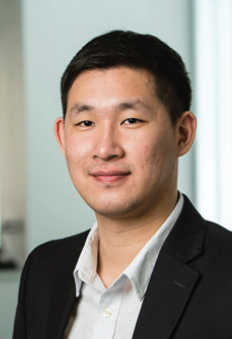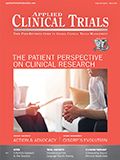The Rise of Shared Digital Health Economy and Promise of Accelerated Clinical Research
Applied Clinical Trials
Patient advocacy organizations are swaying away from a traditional model of granting academic researchers to now supporting biotechnology and pharma companies.
Over the last decade, we have seen a massive “uberizing” transformation of consumer economy, in which
Richard Tsai

individuals now have control of many of their personal properties to be made available to others at a price. As the shared economy continues to expand, we are seeing companies launching similar models around personal data.
This development could help address some of the biggest challenges in healthcare-delivering treatment and care for those with unmet needs, especially those people affected by rare diseases.
LunaDNA and Hu-manity.co are examples of companies looking to enable individuals to own and transact their medical data. Luna DNA received SEC approval of monetary values of an individual’s own genomic and related health data. While promising, it will take time to gauge major results, which begs the question-what’s being done now to develop therapies?
With treatments available only to around 5% of the 7,000 rare diseases, or about 10% of the 30 million affected individuals in the US, the challenge to take on rare disease is beyond just the numbers. Historically, the biopharmaceutical industry has gravitated away from rare disease drug development due to the perception of high risk and, ultimately, the profitability question. Nonetheless, organizations like the Cystic Fibrosis Foundation, which supported development of Kalydeco by Vertex, and other trailblazers in the non-profit patient advocacy space have begun to build a paradigm required to speed rare disease research by mitigating risks and obstacles for the industry, patients, regulators, and other key stakeholders in the research ecosystem.
The Children’s Tumor Foundation (CTF) has recently built a new integrated R&D accelerator model to provide critical resources and infrastructure, that has been lacking to researchers, to properly study and translate their studies into clinical programs. In this particular case, CTF focused on applying the model toward neurofibromatosis (NF). It established an NF patient registry to enable nature history studies and patient recruitment, an NF biobank to support researchers accessing well-characterized tissues and samples, a preclinical consortium, and an NF data hub. CTF also fostered a network of NF key opinion leaders, NF academic researchers, and NF clinicians for standardizing diagnosis and outcome measures.
Of all these elements, recruiting patients to participate is critical, and the 10,000-member NF registry has supported recruitment needs for 20-plus clinical trials. The establishment and availability of such infrastructure can affect the go/no-go decision for industry to invest in rare disease drug development.
We are seeing many other patient advocacy organizations swaying away from a traditional model of granting academic researchers to now supporting biotechnology and pharma companies. In addition to the financial grants received by Tocagen from the American Brain Tumor Association, National Brain Tumor Society, and Accelerate Brain Cancer Cure, the help from the patient advocacy organizations with clinical trial recruitment significantly reduced the recruitment barrier that many other companies almost always face, especially with rare diseases.
Another noteworthy patient advocacy organization is the Hereditary Neuropathy Foundation (HNF). HNF has been focusing on accelerating R&D for those affected by the rare disorder Charcot-Marie-Tooth (CMT) and other inherited neuropathies. Unlike other monogenic-based rare diseases, CMT is comprised of multiple genetic diseases, which makes it much more difficult and complex for researchers to study.
This amount of collaboration among industry, academia, government, non-profit foundations, and patient advocacy organizations has resulted from the unique sets of inherent challenges in rare disease drug discovery and development. And as other companies complement these efforts by continuing to build application programming interfaces (APIs) to enable individuals to share data easily within the research ecosystem, every rare disease patient will have the opportunity to help propel drug discovery.
Richard Tsai, Vice President of Marketing, Inspire

2 Commerce Drive
Cranbury, NJ 08512
All rights reserved.